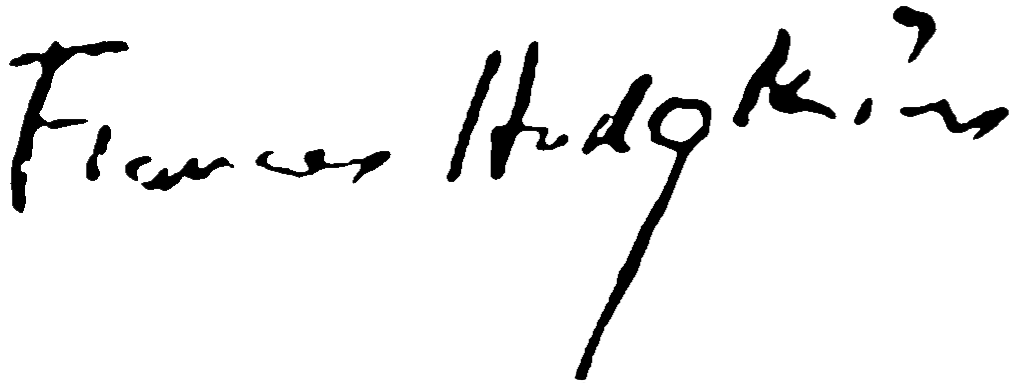-
Frances Hodgkins
Burford High Street, Oxfordshire c.1922
Watercolour & pencil, 11 x 13 cm
Signed F Hodgkins lower right
To Rachel Hodgkins, 13 January 1922. Studio, St Lawrence’s St, Burford, Oxon.
…[The Studio] is a lovely old barn. I have bought 8 old chairs for 10/-… an old counter for a table, an iron bedstead & various adjuncts including a black kitten, young of Mrs. Plosh of Park Farm, Barrington. It takes plenty of nerve to climb my ladder – a handrail will be necessary if visitors are not to break the neck in the semi-darkness of a winter afternoon.... No more now Dearest. It is too cold. You must walk seven miles at least if you want to get thawed – so I am off – I go [in] the afternoon round by Grt. Barrington by the low road & back by the High.
In 1922 Frances Hodgkins moved to the Cotswolds town of Burford about twenty miles from Oxford. There she rented a lovely old barn, which was to serve both as a studio and her living quarters. She was determined to make the barn into a ‘Hodgkins centre’, where pupils could rally round and immerse themselves in art. At the same time she could not believe that she was settling down again in England after shaking its dust off her feet only a year before.
Hodgkins continued to hold regular art classes and students soon flocked to the small town of Burford. Hodgkins related her experience of teaching to her close friends, Jane Saunders and Hannah Ritchie in a letter written from her studio on the 24th of June 1922:
Burford is a deadly place for stranded artists when it rains. I have had them all very heavily on my chest. A friend living at Taynton, 1 1/2 miles away, has let me have the run of her house & garden while she is in London – so we have been tramping out there in the wet with our lunch & tea & painting flowers – of every description – a lovely rose garden with torrents of blossom from every tree.
The present watercolour, Burford High Street, Oxfordshire c. 1922, is a clear example of Hodgkins’s mature style, which she had developed by the 1920s. The naturalistic element is still present, but she has shifted her attention to focus on the reality of the picture plane, which takes precedence over the creation of a three-dimensional illusion. As such, the landscape has been completely flattened and divided into clear segments of contrasting colour. The success of the painting lies in Hodgkins’s mastery of subtle shifts in chromatic tonalities and the use of a fluid, gestural line, which works to unify the composition and to provide a harmonious balance.
_
Written by Grace Alty & Jonathan Gooderham
Edited by Jemma Field
Reference
Frances Hodgkins Database FH0730
(completefranceshodgkins.com)
Exhibited
London, U.K. Tate Gallery, Frances Hodgkins Memorial Exhibition. 1952. Lent by Jane Saunders.
Provenance
Collection of Miss D J (Jane) Saunders and Miss A M (Elizabeth) Shaw
Thence by descent
Private collection, Auckland
